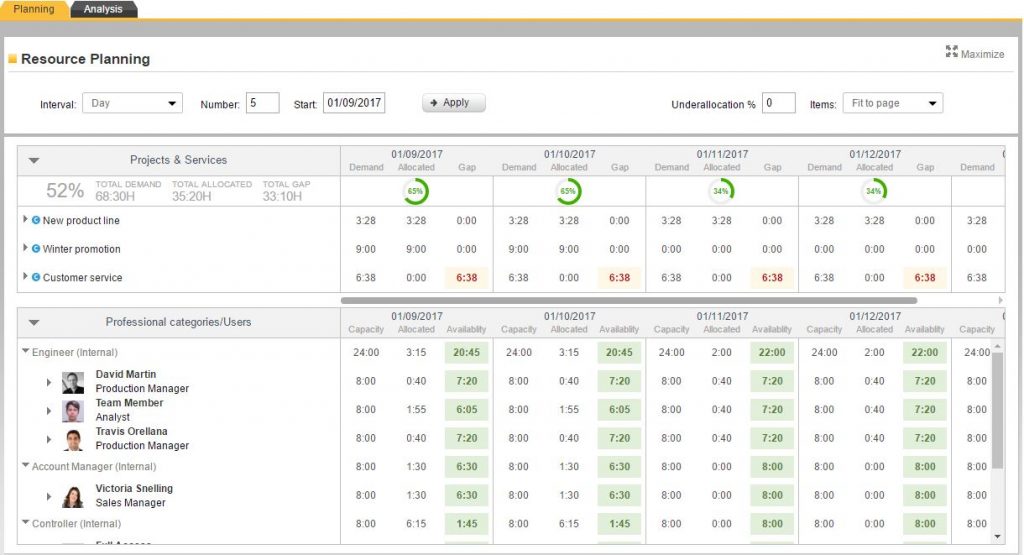 There are more and more companies that, regardless of their size, are applying strategies to optimize the management of their portfolio. This fragmented macro-unit welcomes the set of projects, programs or operations opened by the company to respond to its business demand. Such elements may interact with each other or not, but in any case require the allocation of resources to be carried out.
There are more and more companies that, regardless of their size, are applying strategies to optimize the management of their portfolio. This fragmented macro-unit welcomes the set of projects, programs or operations opened by the company to respond to its business demand. Such elements may interact with each other or not, but in any case require the allocation of resources to be carried out.
To begin with, it is important that we narrow down the scope of each of the segments in which we bring together our creative or commercial initiatives. If a project is a temporary effort to achieve a unique result, a program would be a set of projects, that pursue a common outcome. Even though there is no functional relationship between projects that are under one umbrella, sharing strategies, components and business structures involves managing resources at a higher level.
These competencies are under the control of the PMO (Project Management Office), a department that has gained importance in recent years due to the innumerable advantages it brings to the company that manages it correctly. One of the greatest advantages it brings is the aerial perspective that contributes to managers when it comes to assessing the efficiency of their business processes due to the close connection between corporate governance and portfolio management.
Centralized Portfolio Management
Portfolio management allows organizations to identify the deviations that occur within programs and correct them by reallocating human resources, technological resources or priorities. Constant evaluation of ongoing operations is the basis of project optimization, especially if these are related and pursue a specific purpose. Some responsibilities of a PMO are:
-
The establishment of a general methodology that supports portfolio management practices.
-
The creation of a structure in which to carry out this methodology.
-
Advice on the allocation of resources and priorities in order to maintain the corporate orientation.
-
Selection of components of the organizational structure that will accommodate the resources and provision of the tools appropriate to each position.
-
Provision of internal protocols to evaluate, measure and monitor the distribution of competences.
-
Reassignment of resources, analysis of constant priorities and optimization of decisions.
-
Value analysis of the portfolio through the use of economic indicators designed to measure the success of business initiatives such as ROI, VAN or PP.
Assignment of Human Resources at portfolio level
The employees who give life to our projects must be managed as an investment portfolio, that is, as a group of high value assets that have a specific weight in the company.
To do this, it is essential to start with a holistic view of resource allocation, which functions as a centralized project management office for this purpose.
Now let’s look at an example with the planning view of the ITM Platform resource management area.
This view shows aggregate data on demand and supply of resources in one place.

General view
At the top of the view, for each project you can check:
-
The total demand for hours for this project
-
The total number of hours allocated
-
The deviation between the two

Demand view
These three factors are also broken down periodically. For example, you can view the weekly demand, allocation and deviation segments over the next quarter and act on them:
-
Identify problems of over-allocation
-
Break down the details of the assignments until you find the over-allocated professional categories
-
Identify default deviations and allocate new resources
At the bottom of the view, the project entry is replaced by resource categories. Typically, here will be the analysts, divided, for example, between external and internal.

Supply view
Similarly, to the top, each professional category is shown; the total capacity, hours allocated and availability.
This view shows:
-
Display when a resource is over-allocated or underutilized.
-
Resolve divergences between capacity and allocations.
To see more precisely the demand and supply of resources and its different views, try a free trial of ITM Platform.
Two other important actions that can be framed within the human resources management at the portfolio level would be:
-
Diversification of talent to eliminate the risks of a hiring policy based on non-flexible profiles.
-
Perform integration actions that increase the value of a set of employees that alone would be less effective. Fostering synergies and redistributing them is vital in order to find the combination of human resources that best suits the needs of each project and, in short, the goals of a particular program or general business strategy.
It should be noted that not all assets have the same value and each of them has a rating given by the importance of their contribution to the common purpose. This rating should not have a permanent character, but rather be an indicator of the evolution of the employee's performance and since the management of portfolios must be counted on. The management of professional resources must establish a protocol based on a deep analysis of the results of each individual or group and apply corrective measures that include internal recruitment, promotion of employees or their training to improve their contribution to the segment of the project in which they work.
Not all employees are the same
Portfolio management must be able to identify those resources, which, because of their special talent, must occupy a key place in a project. There are techniques that allow managers to reliably track their future managers.
Among them we highlight:
-
Evaluation center: An affordable group of participants is selected and placed in management situations involving agile decision making.
-
Workforce Review Committee: This is a kind of roundtable held at the highest corporate level that takes into account performance reports and evaluations of all kinds to define the career of its future managers.
Finally, we emphasize the importance of having portfolio management tools that provide a comprehensive view of the processes opened by the company and allow to act, precisely, on each assigned resource.

